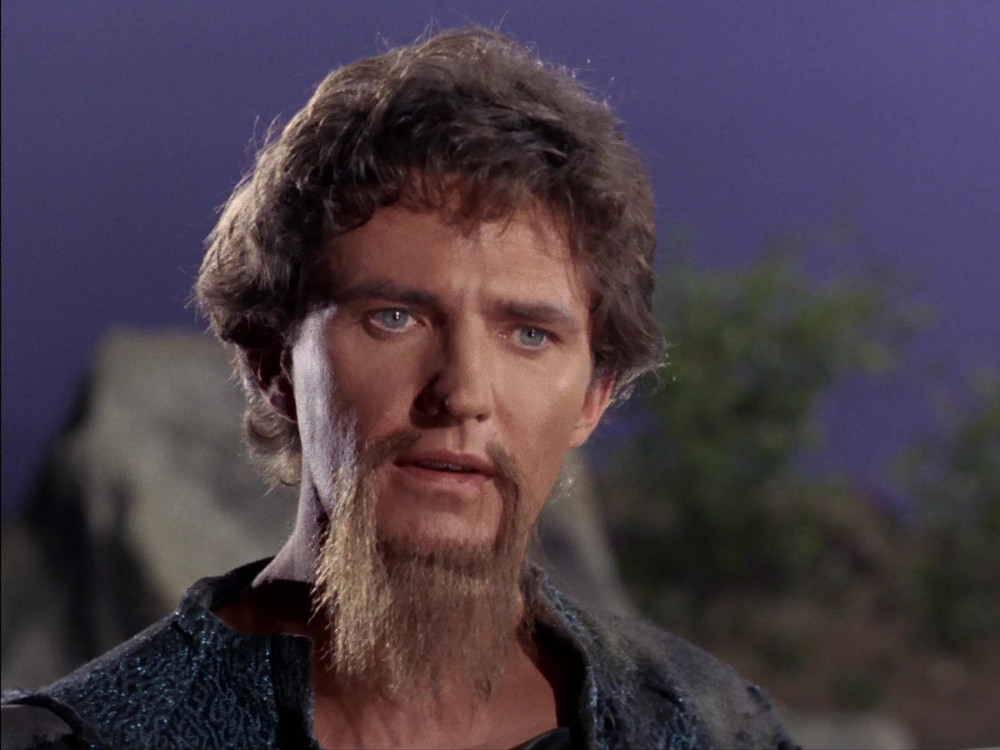Difference between revisions of "Lazarus"
m |
m |
||
| (3 intermediate revisions by the same user not shown) | |||
| Line 1: | Line 1: | ||
| − | {{ | + | {{MyriadLazarus}} |
| + | {{ImageInfoBox2|name=Lazarus|file=lazarus-tos20.jpg|caption=Lazarus ([[Star Trek|TOS]] [[The Alternative Factor (Episode)|20]])}} | ||
{{TableRow|title=Species|data=[[Humans|Human]]}} | {{TableRow|title=Species|data=[[Humans|Human]]}} | ||
{{TableRow|title=Sex|data=Male}} | {{TableRow|title=Sex|data=Male}} | ||
| + | {{TableRow|title=First Appearance|data=[[Star Trek|TOS]] [[The Alternative Factor (Episode)|20]] ([[1967 (Production)#MAR30|30 Mar 1967]])}} | ||
{{TableRow|title=Portrayed by|data=[[Brown, Robert|Robert Brown]]}} | {{TableRow|title=Portrayed by|data=[[Brown, Robert|Robert Brown]]}} | ||
| − | {{TableRow|title=Advertising|data={{ | + | {{TableRow|title=Advertising|data={{AmazonLinkTOSBD}}}} |
|}</div> | |}</div> | ||
| − | + | {{BannerPrime}} | |
| − | + | Lazarus was a scientist who discovered how to travel to a [[OS20 Timeline|parallel universe]]. Unfortunately, it proved to be an "[[antimatter]] universe," with an opposite charge to the [[Prime Timeline]]. When Lazarus arrived, he inadvertently caused a reaction that devastated both his [[Lazarus' planet|homeworld]] and its [[Lazarus' planet (OS20)|counterpart]], leaving both lifeless. His [[Lazarus (OS20)|counterpart]], driven mad by the experience, took it upon himself to destroy the "monster" that he blamed for his world's destruction. His [[Lazarus' ship|ship]] was capable of traveling both in [[time travel|time]] and space, as well as between universes, and he was chased by his counterpart for many [[years]]. The two met briefly in a [[negative magnetic corridor]] between realities before switching places in each reality, and fought one another each time. Lazarus, with [[Starfleet Captain|Captain]] [[Kirk, James T.|Kirk]]'s help, trapped himself and his counterpart in the corridor, saving both realities but condemning the men to an eternal battle.<ref name="TOS20"/> | |
| − | |||
| − | |||
| − | |||
| − | |||
| − | |||
| − | |||
| − | |||
| − | |||
| − | |||
| − | |||
| − | |||
{{References}} | {{References}} | ||
<references> | <references> | ||
| − | <ref name="TOS20"> | + | <ref name="TOS20">{{RefTOS20}}</ref> |
</references> | </references> | ||
| − | |||
[[Category:Library]] | [[Category:Library]] | ||
[[Category:People]] | [[Category:People]] | ||
| − | |||
[[Category:TOS]] | [[Category:TOS]] | ||
[[Category:Film]] | [[Category:Film]] | ||
| − | |||
[[Category:Time Travel]] | [[Category:Time Travel]] | ||
[[Category:Prime Timeline]] | [[Category:Prime Timeline]] | ||
| − | |||
| − | |||
| − | |||
Latest revision as of 07:56, 6 September 2023
| Species | Human |
| Sex | Male |
| First Appearance | TOS 20 (30 Mar 1967) |
| Portrayed by | Robert Brown |
| Advertising |
Lazarus was a scientist who discovered how to travel to a parallel universe. Unfortunately, it proved to be an "antimatter universe," with an opposite charge to the Prime Timeline. When Lazarus arrived, he inadvertently caused a reaction that devastated both his homeworld and its counterpart, leaving both lifeless. His counterpart, driven mad by the experience, took it upon himself to destroy the "monster" that he blamed for his world's destruction. His ship was capable of traveling both in time and space, as well as between universes, and he was chased by his counterpart for many years. The two met briefly in a negative magnetic corridor between realities before switching places in each reality, and fought one another each time. Lazarus, with Captain Kirk's help, trapped himself and his counterpart in the corridor, saving both realities but condemning the men to an eternal battle.[1]
Notes and References
- ↑ Roddenberry, Gene (Executive Producer). "The Alternative Factor." Star Trek, Season 1, Episode 27 (Production 20). Directed by Gerd Oswald. Written by Don Ingalls. Desilu Productions, 30 March 1967.

